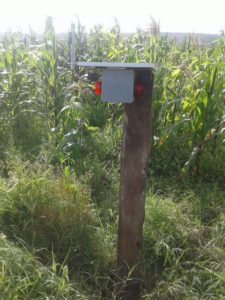
Mara Elephant Project is committed to using the latest techniques and technologies to successfully mitigate human-elephant conflict (HEC). We call this our HEC toolkit that we view as our best practices for HEC mitigation. A recent new technology added to the toolkit is a flashing light fence and what we’ve found works really well in conjunction with these new fences is what is called an ElephantShield system (pictured left).
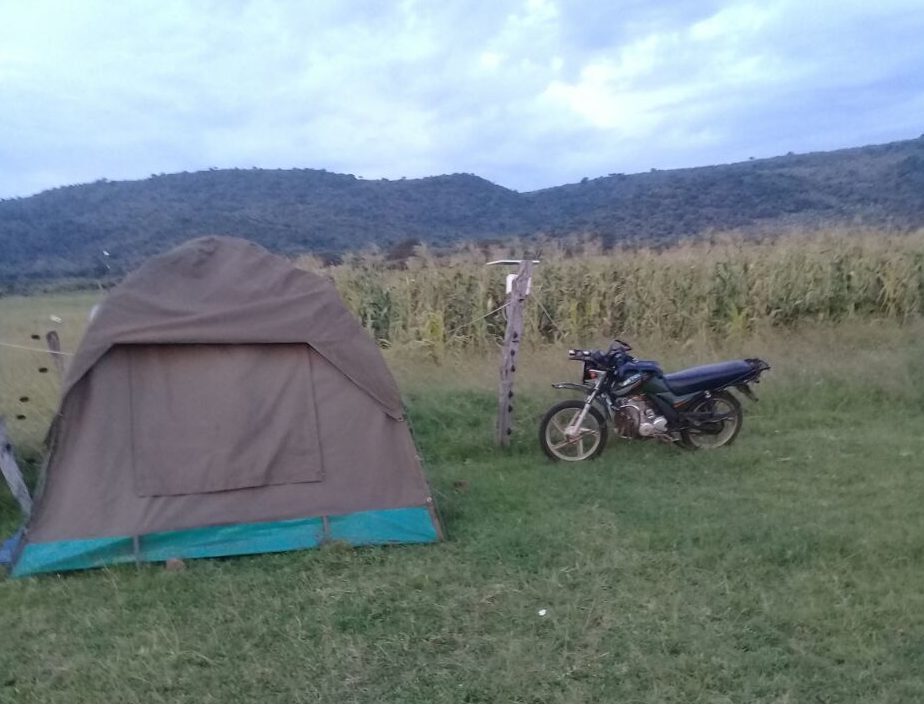
The MEP Enkutoto and Munyas ranger team’s tent at a Ngosuani maize farm that was being crop raided nightly.
It was developed by Henrik Rasmussen, the managing director of Savannah Tracking, to automatically trigger a loud alarm to alert farmers as elephants enter crops. How it works is that the system picks up a radio frequency from a GPS collar on a MEP collared elephant that then triggers the flashing lights and sirens as the animal approaches.
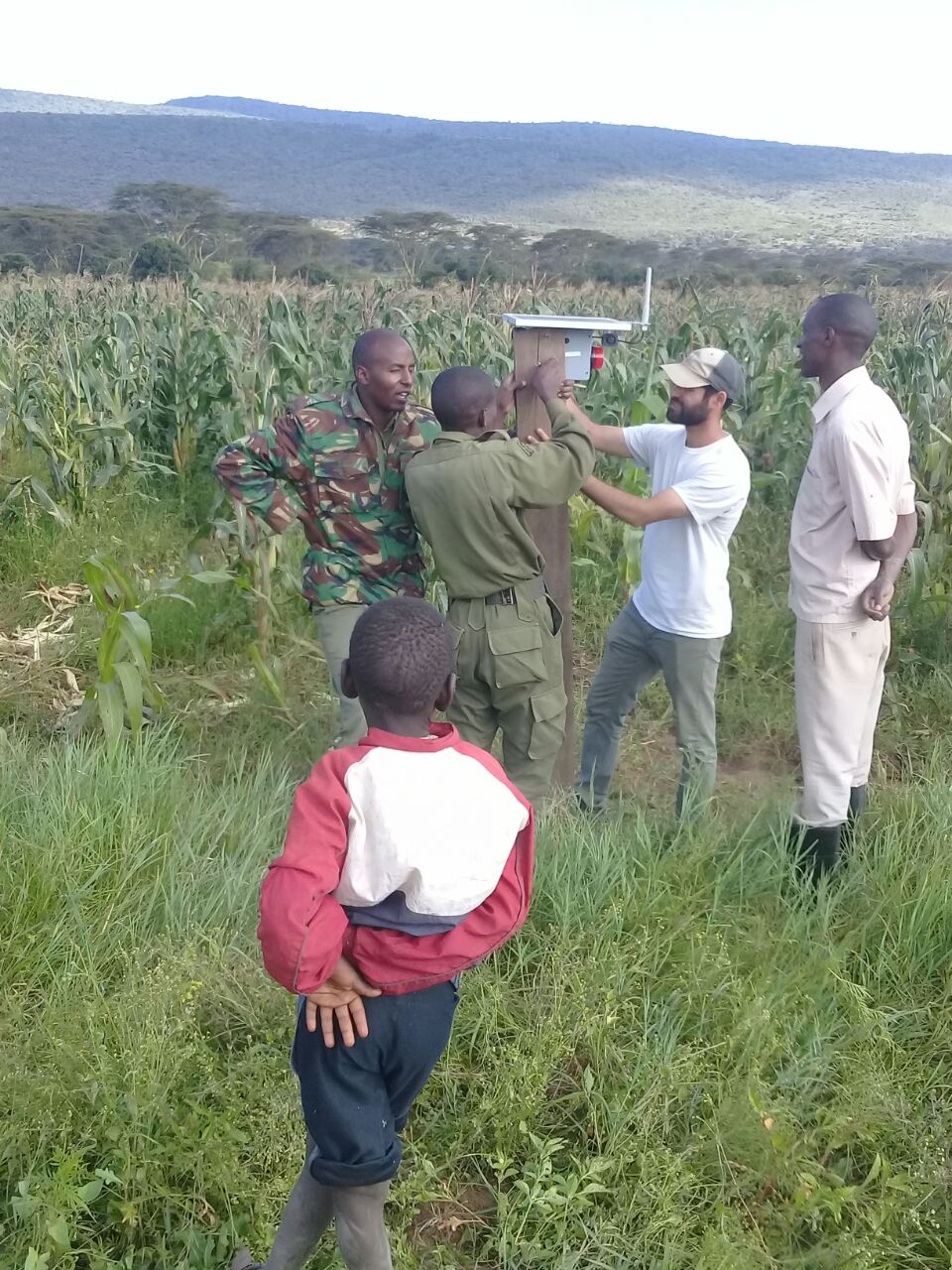
This is an installation in Osero of the solar alarm by the MEP Enkutoto, Munyas and HQ teams.

These alarm systems are solar powered and trigger to make a loud alarm sound when the VHF beacon in the elephant collar gets near which not only alarms the elephants to hopefully leave the area but also alerts the community who might be asleep.
A fence being installed by the MEP Munyas team.
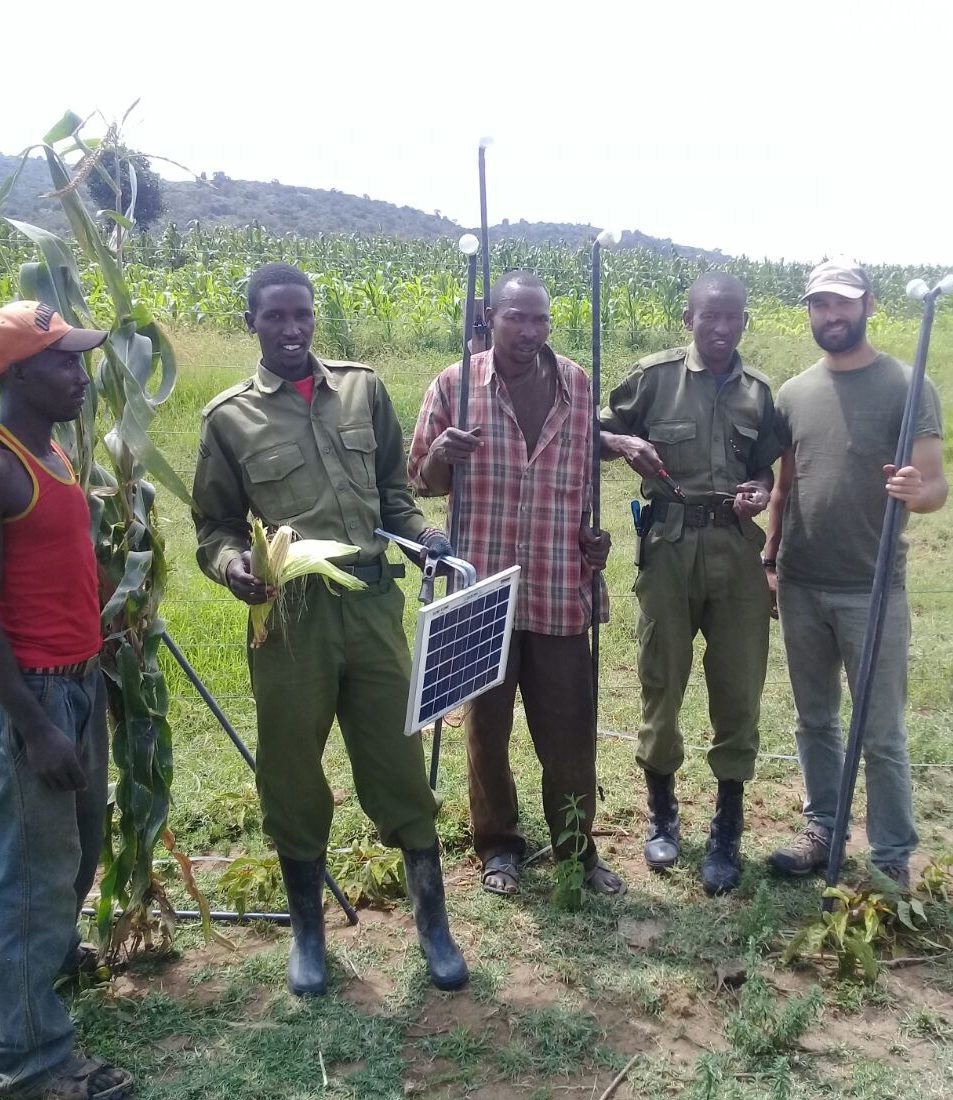 A fence being installed in the Ngosuani Lemek area.
A fence being installed in the Ngosuani Lemek area.
The system is self-contained with a solar panel for charging and can be positioned at high risk farms to assist farmers with HEC mitigation. So far, MEP along with Henrik have deployed five collar-activated alarm systems around farms in high conflict areas like Munyas and Ngoswani. Since installation at the beginning of June, Henrik along with MEP ranger units are actively testing the effectiveness with known MEP crop raiding collared elephants Olchoda and Ivy. We’ll report back on its effectiveness.
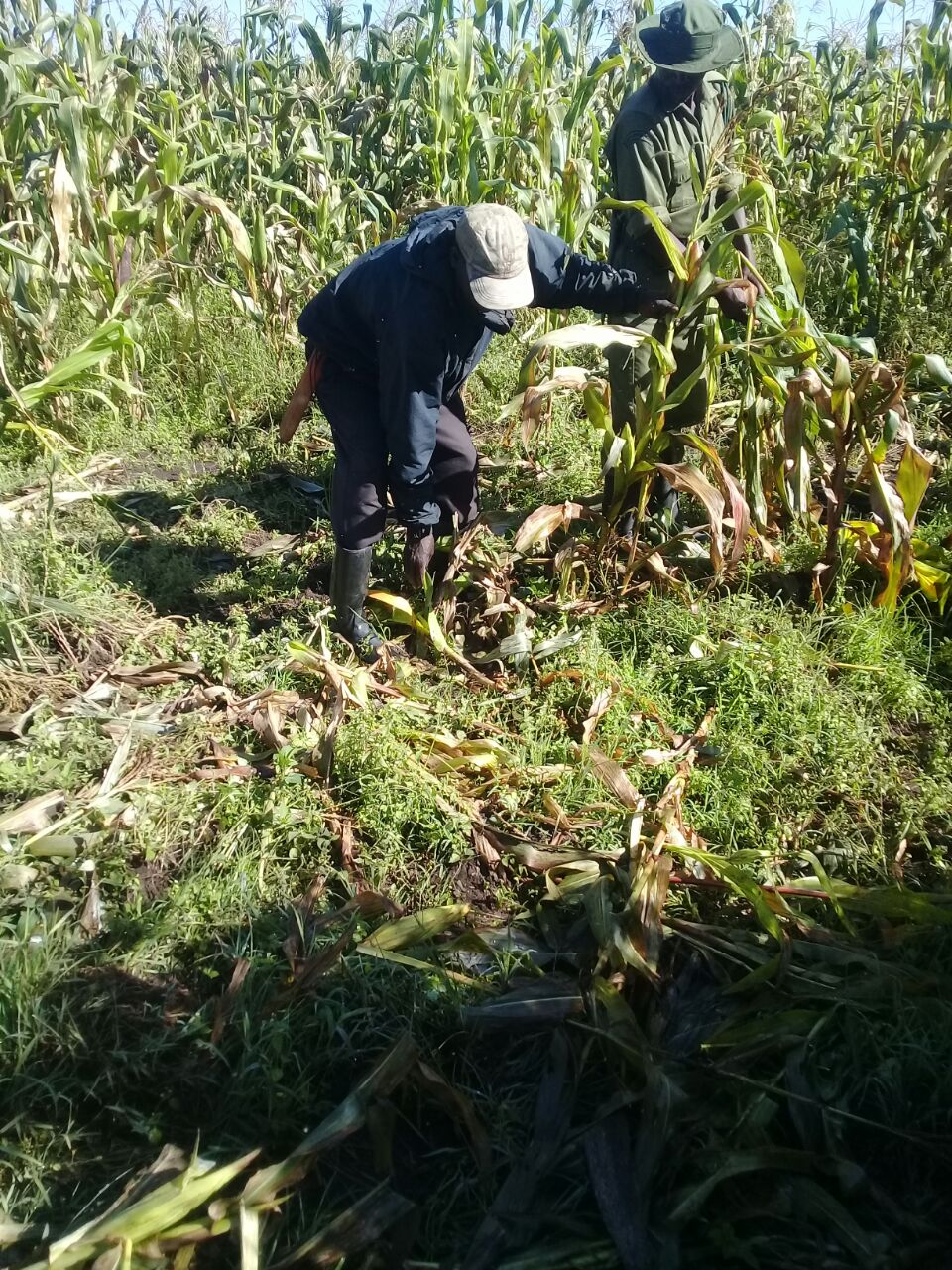
MEP rangers investigating crop damage from an Olkiu Ngosuani maize farm.


